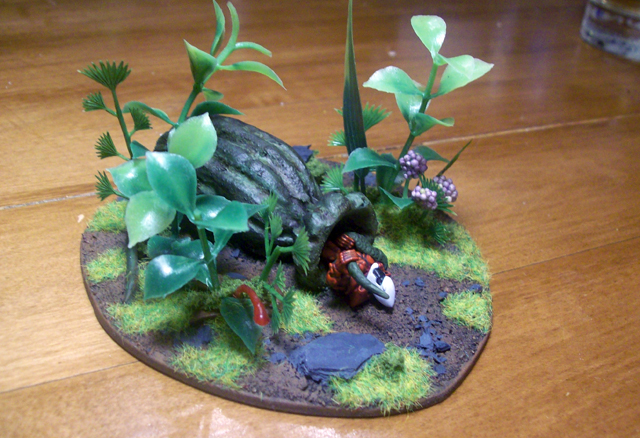Tyranid rippers are small organisms created to spawn in the latter stages of a tyranid invasion for the sole purpose of consuming all matter on the surface of the planet. When they cannot eat anymore matter they immerse themselves in the many digestion pools to be broken down and digested, along with all matter that they have consumed, and sucked back up by the hive fleets so that the DNA can be assimilated by the fleet. In this series I wanted to create one of the many ripper pads that spawn on the surface of the planet during an invasion. I wanted to make these pieces large than the previous tyranid terrain projects and I also wanted to include imperial elements in the terrain as wreckage that has been overrun by the invasion. So without any further ado, lets get started.
Items used in this project:
Particle Board cut into circular shapes
Poppy Pods
Sea shells
Air Hardening Clay
Pink Foam
Stage 1:
I picked up these poppy pods at Michael's Craft Store for about $7. The first thing I did to each pods was to coat it with about 4-5 layers of watered down wood glue. This is so that the glue, when hardened, will reinforce the thin skin of the pods to withstand the wear and tear of use.
 |
Stage 2:
Original I was just going to stick the poppy husks into some clay modeled to look like a rock formation but as I was walking through the craft store I saw a bag of sea shells for about $6 - $7 dollars and I immediately saw an opportunity to give the formations a unique and alien look.
Here I took two sea shells and glued them to the board. Let the glue dry overnight.
Stage 3:
Take a portion of air hardening clay and place it between the shells.
Then press it into the space between the shells and around the sides where it meets the board.
Also try to follow the natural contours of the sea shell to carry on the ribbed and layered look into the clay.
Stage 4:
Next, I dipped my fingers into water and smoothed out the place and shaped the ridges into more pronounced shapes.
Stage 5:
This is better illustrated in the images below but what I did was take an extra seas shell and pressed it lightly into the wet clay so that the ridges are impressed into the clay.
Stage 6:
I trimmed most of the wire from the poppy husk and then glued it into the clay.
Here is another ripper pad made on top of a piece of a ruined ship. This model was released with the 4th edition starter set, which appropriately featured tyranids.
 |
| Here is an image of me impressing the ridges of a sea shell into the clay. |
I have another piece that I am working into the ruins of an imperial outpost. I'll be sure to include images of that piece in next week's article.
On a final note, here are the images of the completed pitcher pod plants from the carnivorous plants project:
 |
| Close-up of a poor guardian trying to fend off an unpleasant fate. |
 |
| Cultist model used for size reference. |
As always, comments or suggestion are always welcome!





















Great stuff. Your tyranid terrain is really coming together.
ReplyDelete